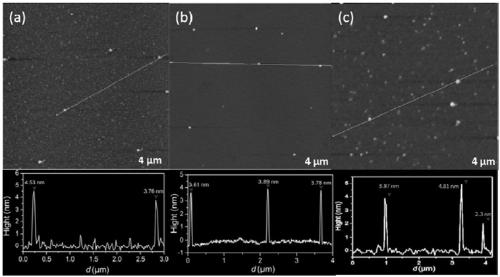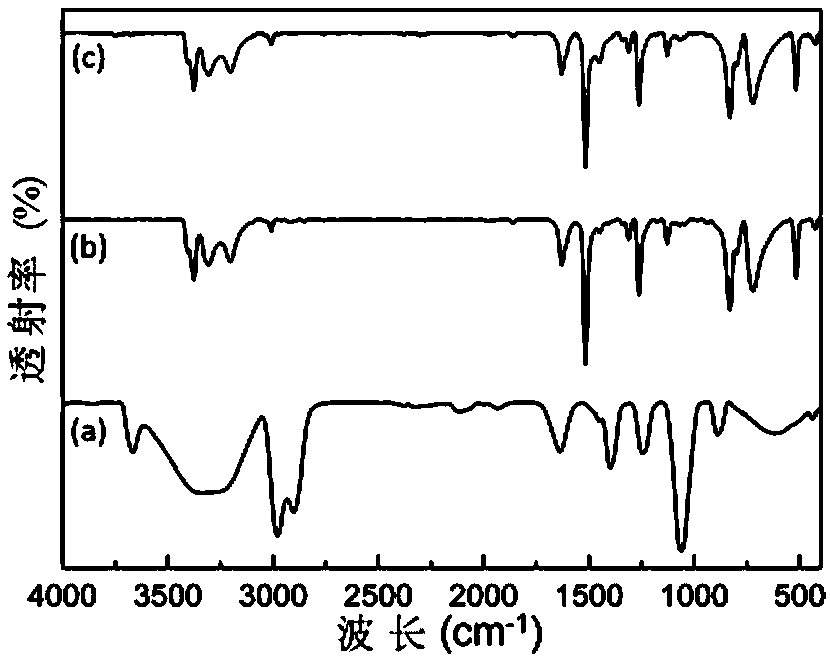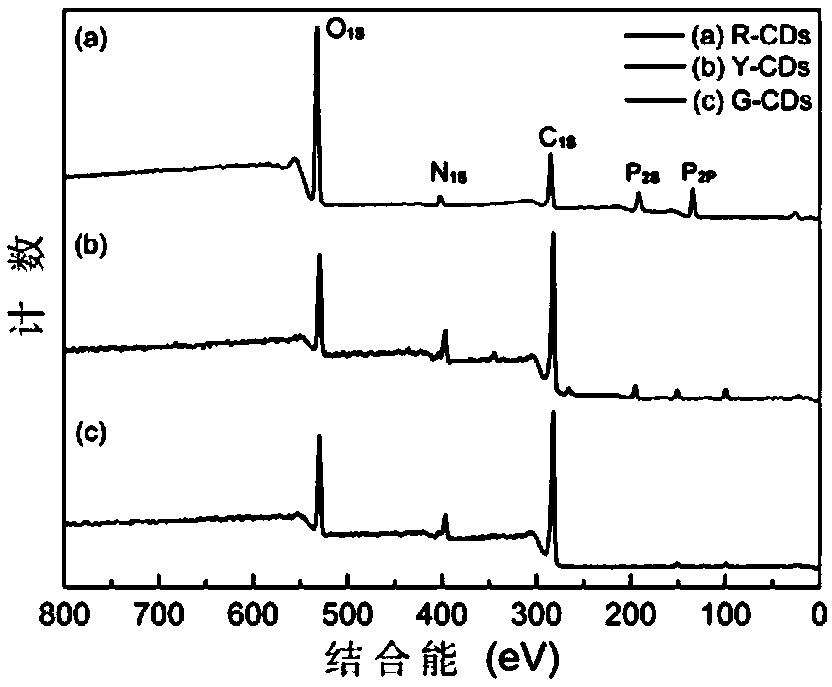Regulation and preparation method and application of multicolor fluorescent carbon dots
A technology of fluorescent carbon dots and carbon dots, which is applied in the field of preparation and application of fluorescent carbon dots, can solve the problems of cumbersome, time-consuming methods, and limit practical applications, and achieve the goals of expanded application, simple operation steps, good solubility and dispersibility Effect
- Summary
- Abstract
- Description
- Claims
- Application Information
AI Technical Summary
Problems solved by technology
Method used
Image
Examples
Embodiment 1
[0022] 1) Weighing 0.3 g of p-phenylenediamine and dissolving it in secondary water, then adding sulfuric acid to the solution to adjust the pH of the solution to 4, and ultrasonically obtaining a uniformly mixed solution;
[0023] 2) Transfer the above solution to a 50mL hydrothermal reaction kettle, react at 200°C for 10h, wait for the reaction to stop and let it cool down to room temperature, centrifuge to remove insoluble matter and take the supernatant, pass through a dialysis bag of 500-1000Da, in Dialysis treatment in a glass container for at least three days to obtain a pure aqueous solution of carbon dots;
[0024] 3) The above carbon dot aqueous solution was freeze-dried to obtain dark red carbon dots. Its relative quantum yield (based on rhodamine B) is 12.5%, and it exhibits red fluorescence (R-CDs).
Embodiment 2
[0026] 1) Weigh 0.3g of p-phenylenediamine and dissolve it in 20mL of secondary water, then add a small amount of HCl to the solution to adjust the pH of the solution to 3, and ultrasonically obtain a uniformly mixed solution;
[0027] 2) Transfer the above solution to a 50mL hydrothermal reaction kettle, react at 200°C for 8h, let it stand and cool to room temperature after the reaction stops, centrifuge to remove insoluble matter and take the supernatant, pass it through a 500-1000Da dialysis bag, Dialysis treatment in a glass container for at least three days to obtain a pure aqueous solution of carbon dots;
[0028] 3) The above aqueous solution of carbon dots was freeze-dried to obtain purple powdery carbon dots. Its relative quantum yield (based on rhodamine B) is 10.8%, showing orange-red fluorescence.
Embodiment 3
[0030] 1) Weigh 0.3g of p-phenylenediamine and dissolve it in secondary water, without any acid-base treatment, and ultrasonically obtain a uniform mixed solution;
[0031] 2) Transfer the above solution to a 50mL hydrothermal reaction kettle, react at 200°C for 10h, wait for the reaction to stop and let it cool down to room temperature, centrifuge to remove insoluble matter and take the supernatant, pass through a dialysis bag of 500-1000Da, in Dialysis treatment in a glass container for at least three days to obtain a pure aqueous solution of carbon dots;
[0032] 3) The above aqueous solution of carbon dots was freeze-dried to obtain purple powdery carbon dots. Its relative quantum yield (based on rhodamine B) is 7.4%, showing yellow fluorescence (Y-CDs).
PUM
 Login to View More
Login to View More Abstract
Description
Claims
Application Information
 Login to View More
Login to View More - R&D
- Intellectual Property
- Life Sciences
- Materials
- Tech Scout
- Unparalleled Data Quality
- Higher Quality Content
- 60% Fewer Hallucinations
Browse by: Latest US Patents, China's latest patents, Technical Efficacy Thesaurus, Application Domain, Technology Topic, Popular Technical Reports.
© 2025 PatSnap. All rights reserved.Legal|Privacy policy|Modern Slavery Act Transparency Statement|Sitemap|About US| Contact US: help@patsnap.com



